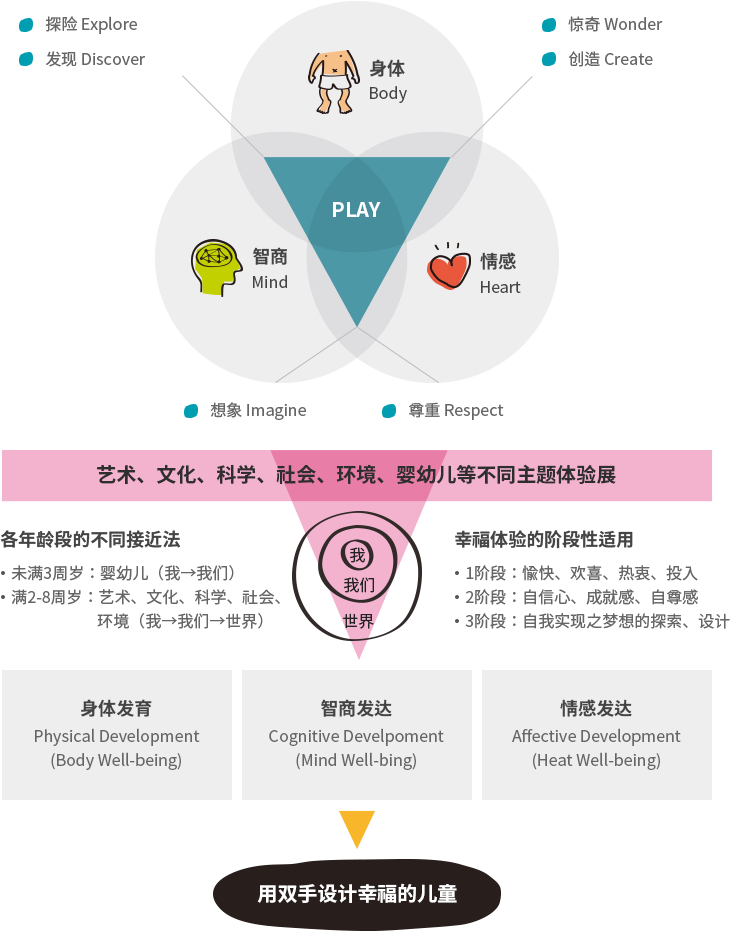用双手设计幸福的儿童
首尔儿童博物馆期待孩子们能够通过展览自主选择幸福的体验,
并通过愉快的游戏与学习过程,成长为拥有属于自己的世界的独立人格。

Seoul Imagination Nara places play (PLAY) as the central value of the exhibition. Based on the characteristics of experiential activities (exploration, discovery, imagination, esteem, surprise, creation) based on the characteristics of the three developmental areas for the whole development of body, cognition and emotion, the themes of art, culture, science, society, environment, Respectively.
The age-specific content system takes age-specific characteristics into consideration. We will construct a structure that extends from 'I' to 'us', from 2 to 8 years old, from 'I' to 'us', further to 'society and the world'
We also applied the stage of happiness experience to the exhibition planning. Step 1 is the stage of pleasure, joy, enthusiasm, and immersion. Step 2 is the stage of self-confidence, achievement, and self-esteem. Finally, Step 3 is the stage of exploring and designing the dream of self realization.
The age-specific content system takes age-specific characteristics into consideration. We will construct a structure that extends from 'I' to 'us', from 2 to 8 years old, from 'I' to 'us', further to 'society and the world'
We also applied the stage of happiness experience to the exhibition planning. Step 1 is the stage of pleasure, joy, enthusiasm, and immersion. Step 2 is the stage of self-confidence, achievement, and self-esteem. Finally, Step 3 is the stage of exploring and designing the dream of self realization.
“用双手设计幸福的儿童”是适用于首尔儿童博物馆内所有展览的落脚点及展览理念。
对于首尔儿童博物馆而言,孩子们并不只是需要关怀与照顾的被动对象,而是能够自主
追求与打造幸福生活的能动主体,并且以这一理念为基础,进行展览节目设计。
游戏是孩子们了解自身与世界的真挚课题,同时也是有助于身体、智商、情感的综合性发达的学习过程。
因此,首尔儿童博物馆也致力于打造体现重视游戏体验的儿童博物馆之教育哲学的展览。
首尔儿童博物馆考虑到婴幼儿与未满8周岁儿童的各阶段发育特点,采用了我、我们再到世界的扩展性思考
接近方法,并根据艺术、科学、文化、空间、自然、身体、想象、感性等不同领域的展览主题和
体验活动目的,提供为孩子们传递幸福的展览。

